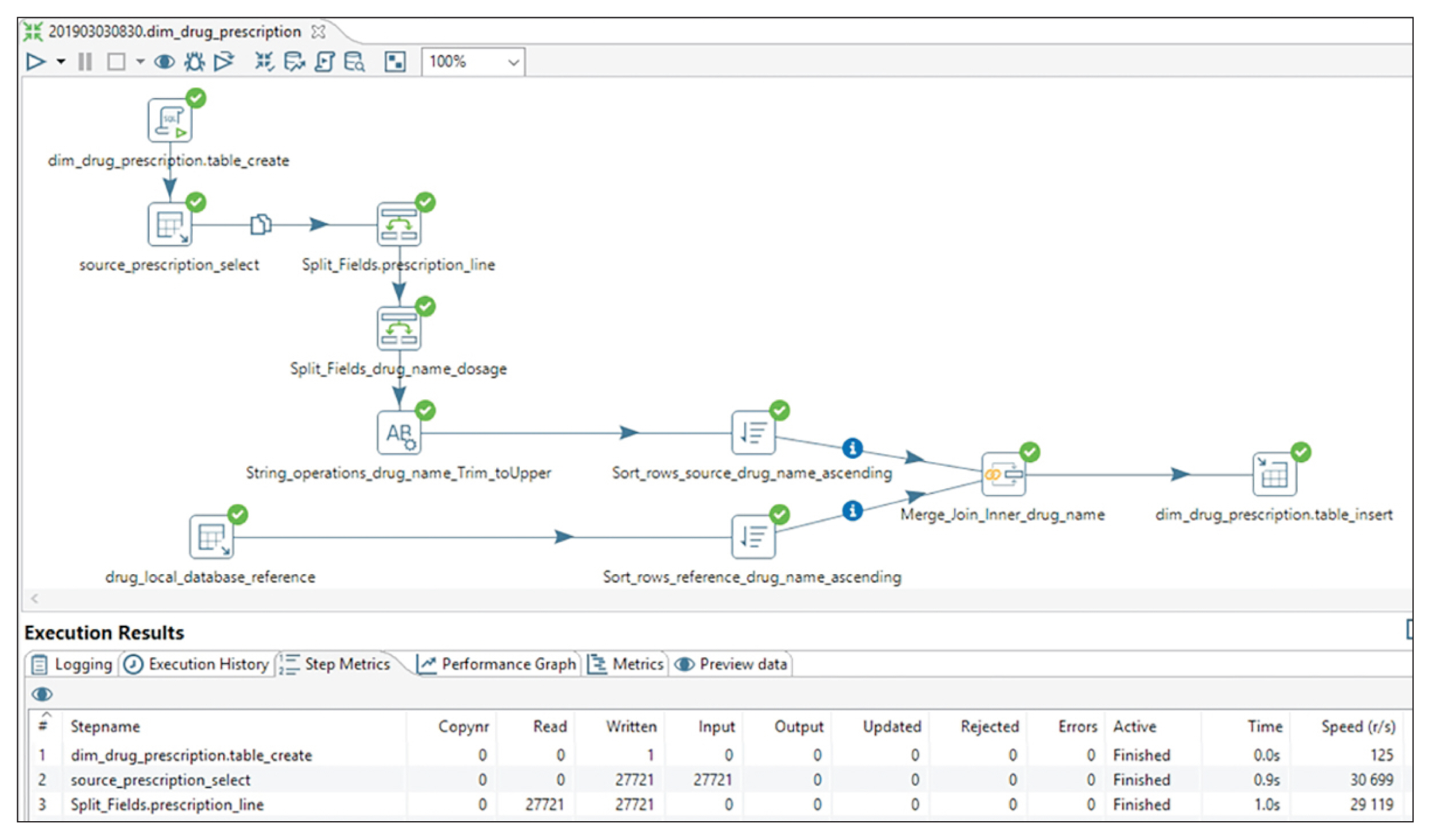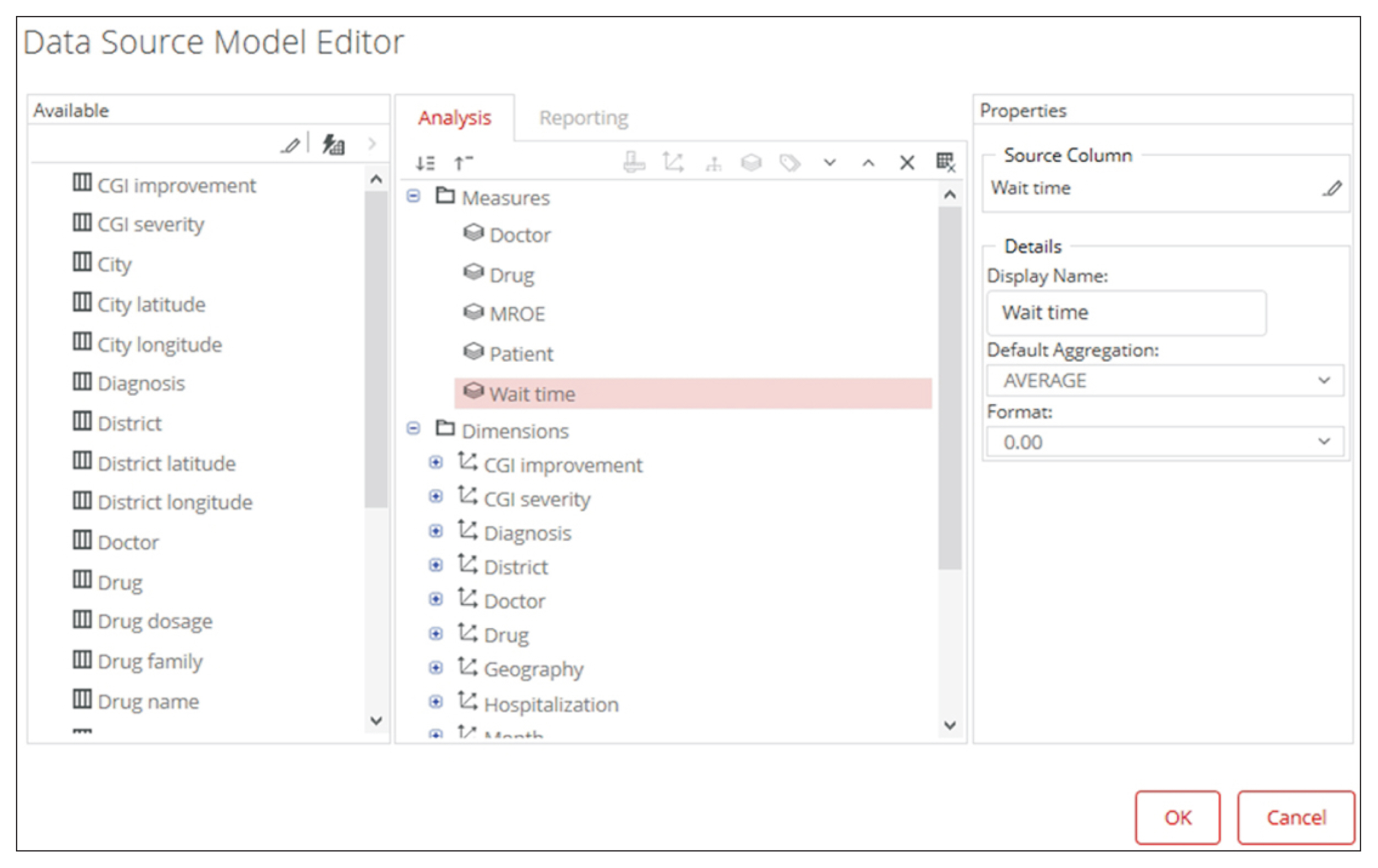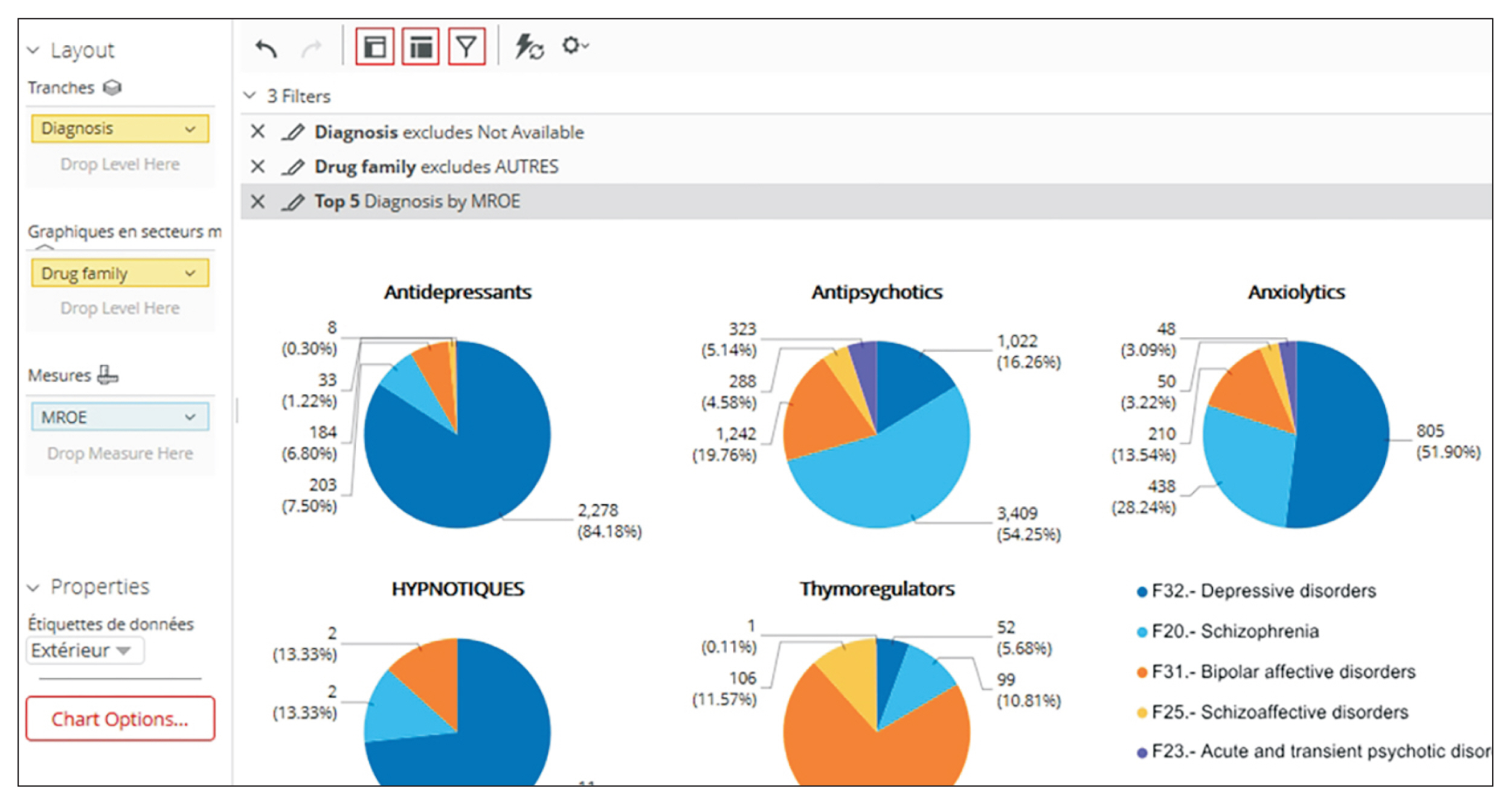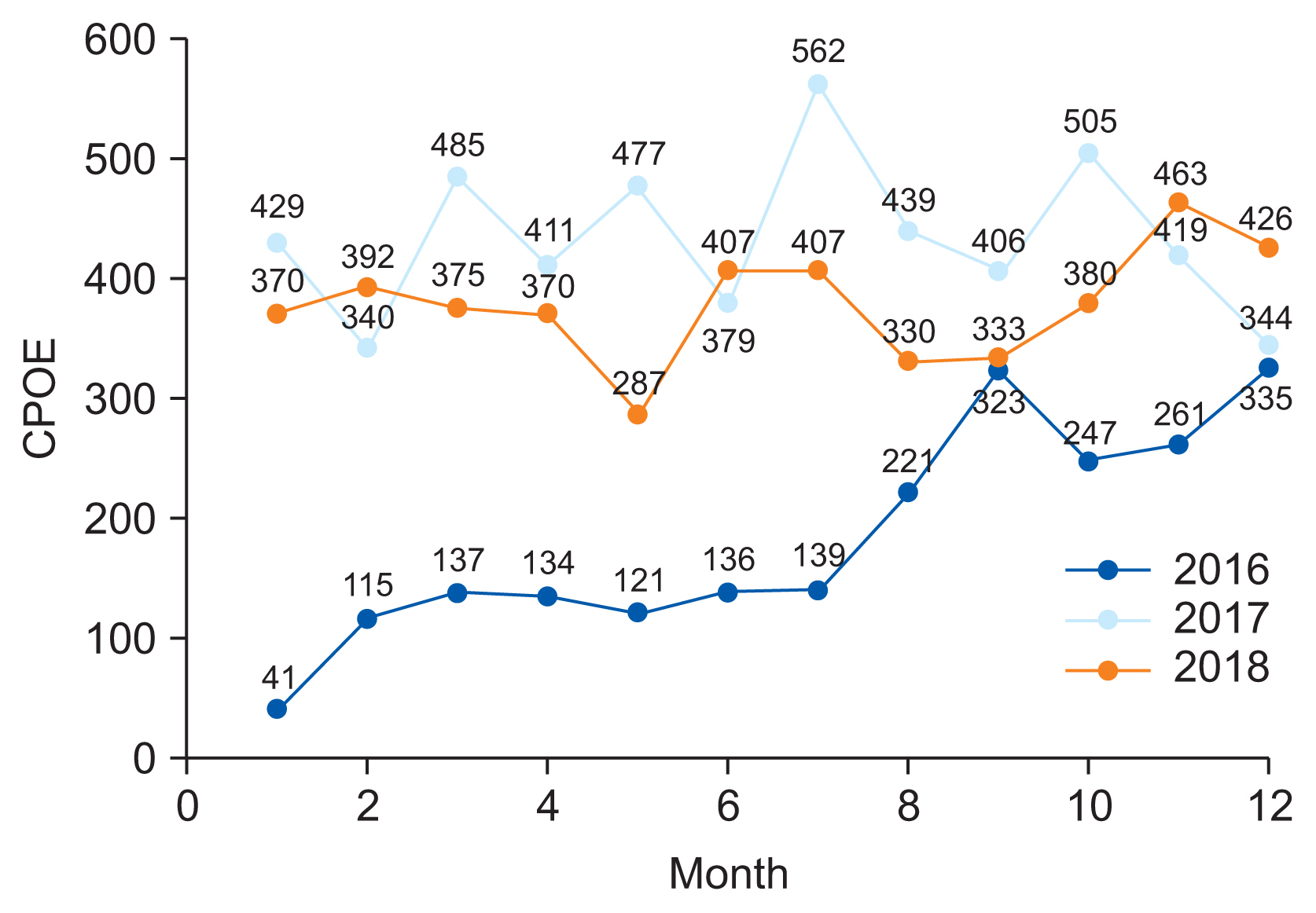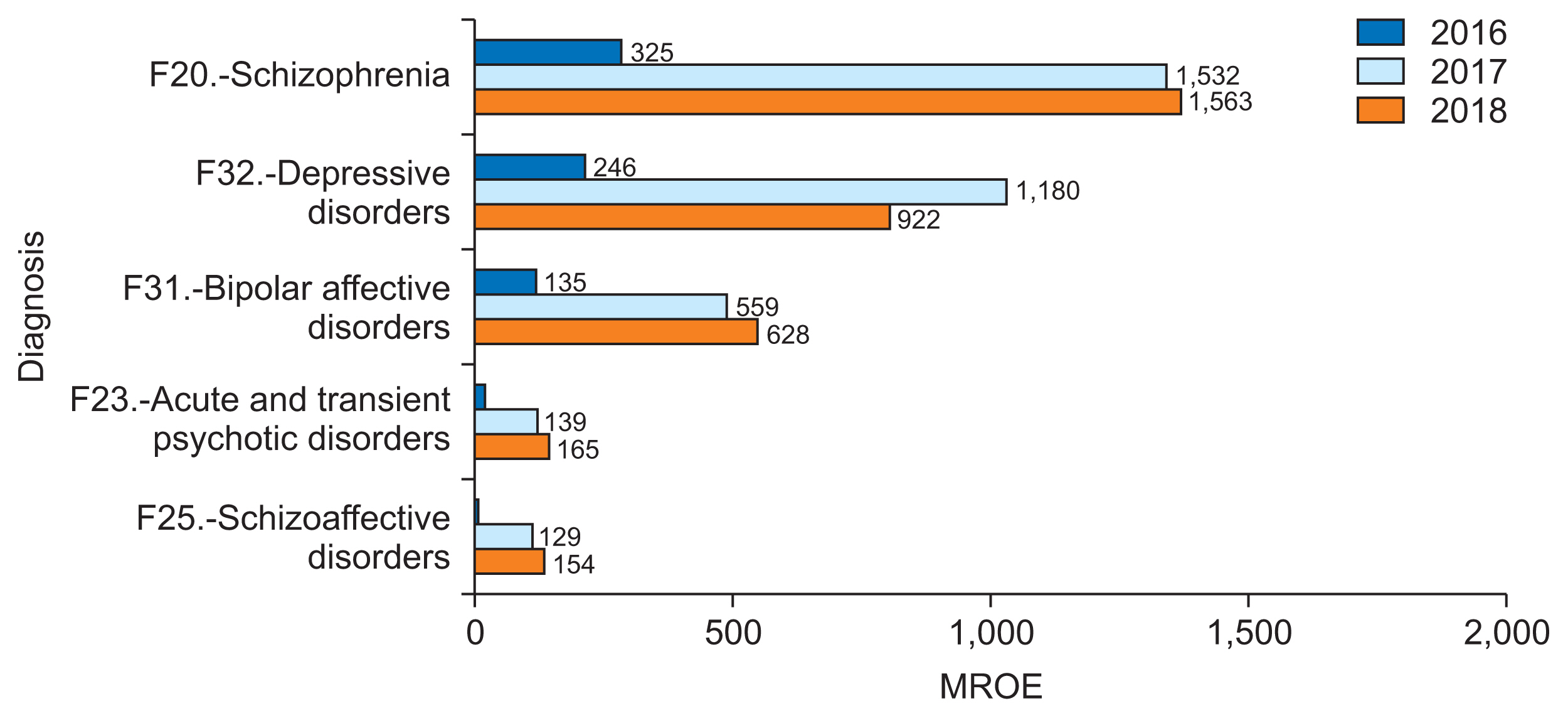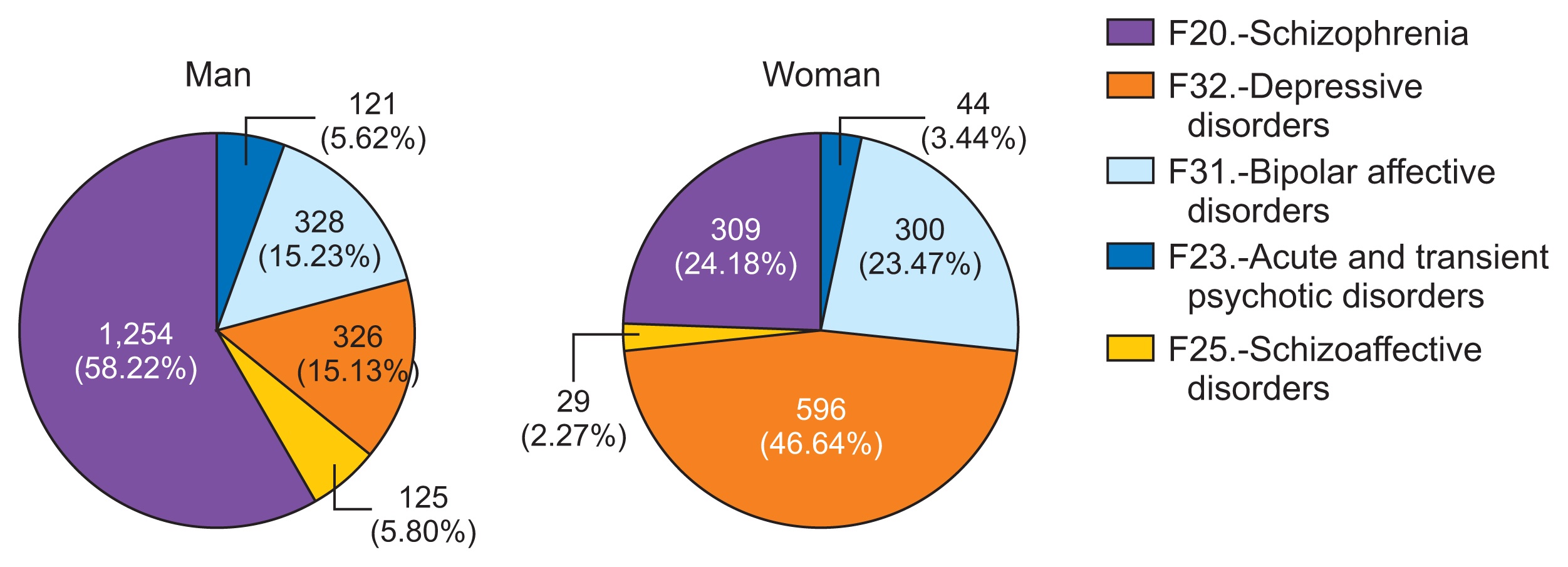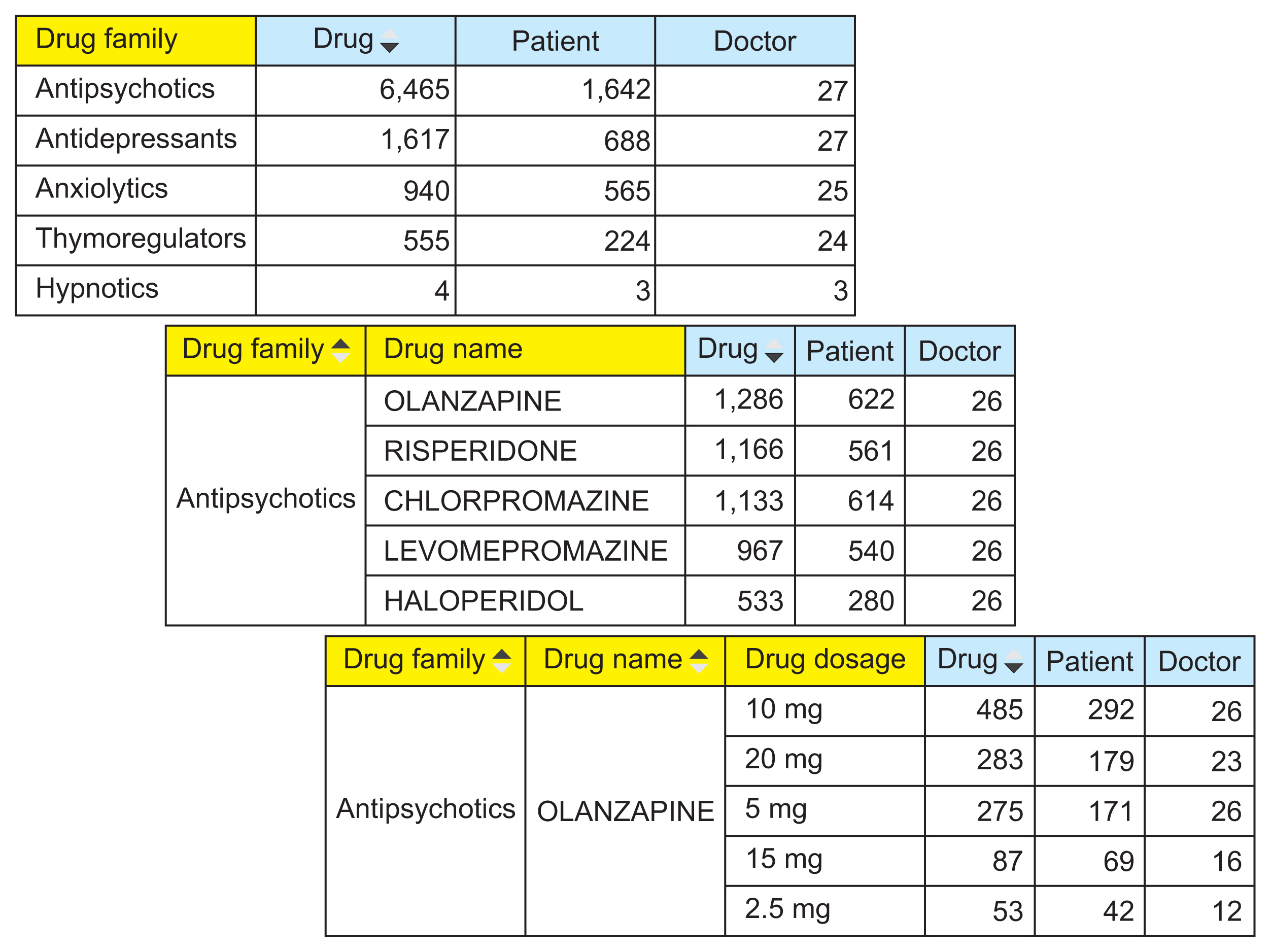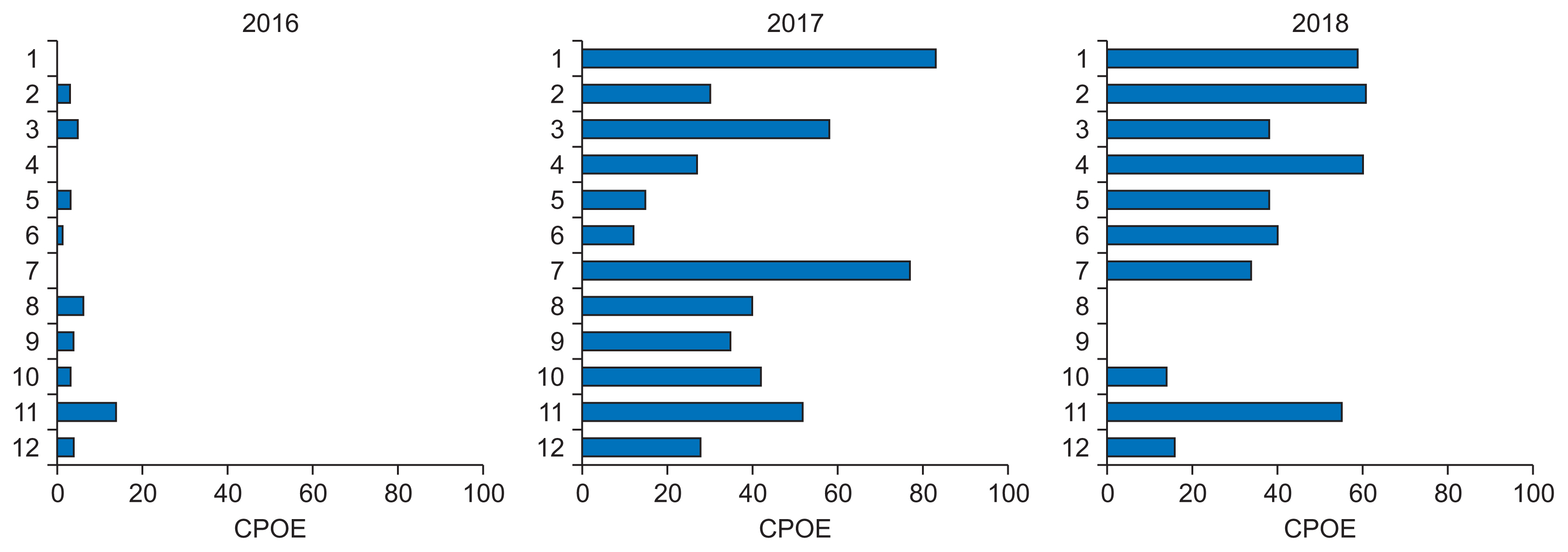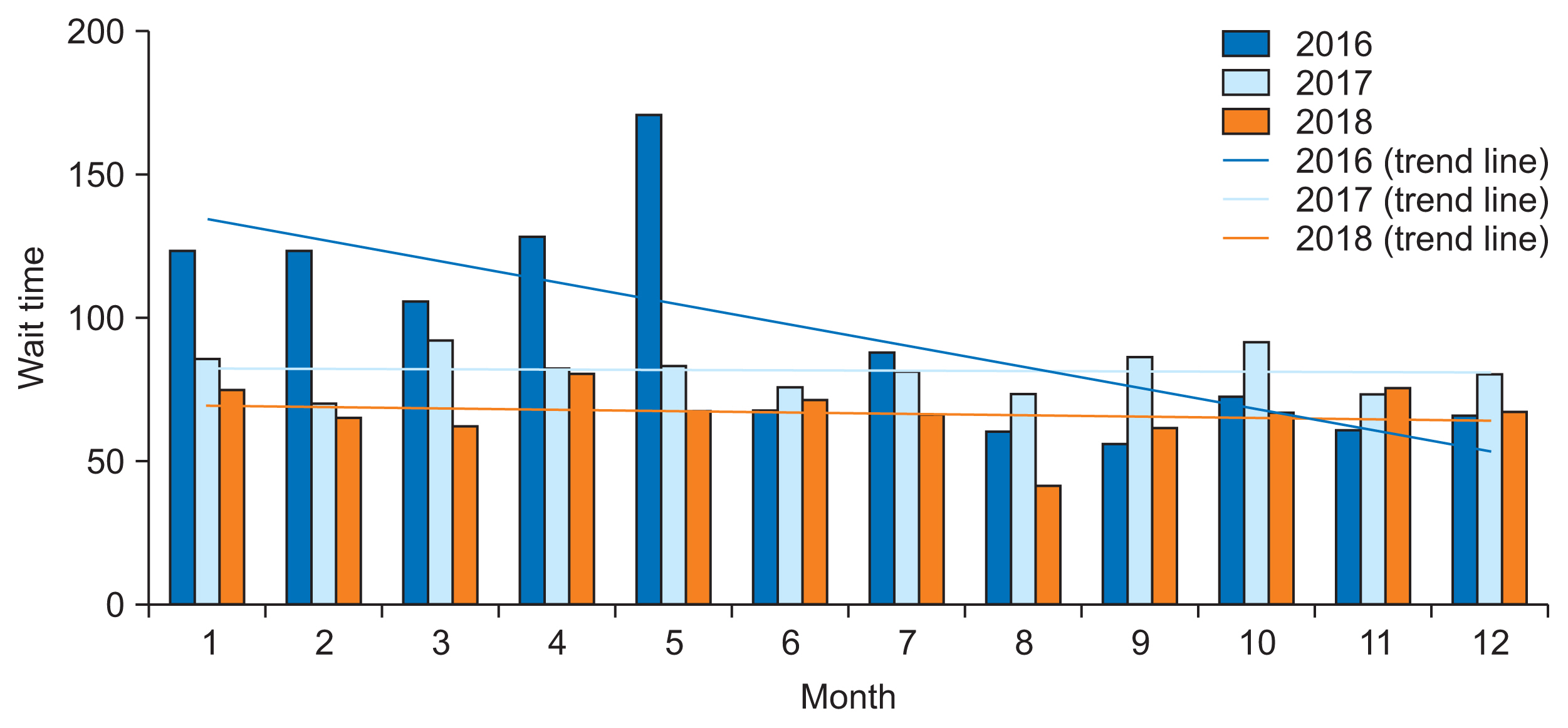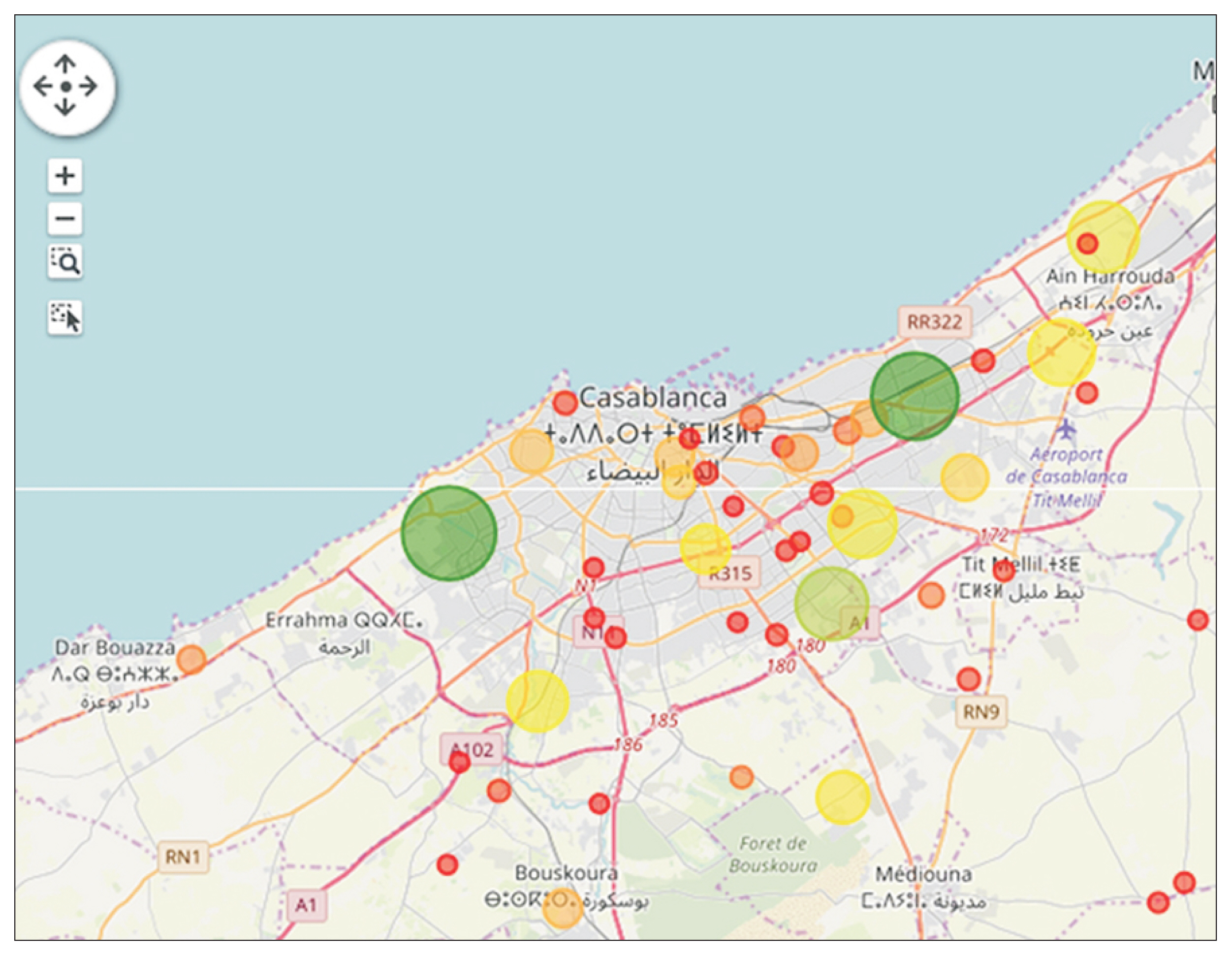Monitoring Mental Healthcare Services Using Business Analytics
- Affiliations
-
- 1Medical Informatics Laboratory, Faculty of Medicine and Pharmacy, University Hassan II, Casablanca,
- 2Clinical Neurosciences and Mental Health Research Laboratory, University Hassan II, Casablanca,
- 3University Psychiatric Centre, University Hospital Ibn Rochd, Casablanca,
- KMID: 2501339
- DOI: http://doi.org/10.4258/hir.2020.26.2.146
Abstract
Objectives Monitoring healthcare activities is the first step for health stakeholders and health professionals to improve the quality and performance of healthcare services. However, monitoring remains a challenge for healthcare facilities, especially in developing countries. Fortunately, advances in business analytics address this need. This paper aims to describe the experience of a low-income healthcare facility in a developing country in using business analytics descriptive techniques and to discuss business analytics implementation challenges and opportunities in such an environment.
Methods Business analytics descriptive techniques were applied on 3 years’ electronic medical records of outpatient consultation of the University Psychiatric Centre (CPU) of Casablanca. Statistical analysis was conducted to compare results over years.
Results Over the 3 monitored years, the monthly number of computerized physician order entries increased significantly (
p < 0.001). Physicians improved their personal recording over years. Schizophrenia as well as depressive and bipolar disorders were noted at the top of outpatient mental disorders. Antipsychotics are the most prescribed drugs, and a significant annual decrease in outpatient care wait time was noted (p < 0.001).Conclusions Business analytics allowed CPU to monitor mental healthcare outpatient activity and to adopt its business processes according to outcomes. However, challenges mainly in the organizational dimension of the decision-making process and the definition of strategic key metrics, data structuration, and the quality of data entry had to be considered for the optimal use of business analytics.
Keyword
Figure
Cited by 1 articles
-
Real-Time Monitoring System to Manage Mental Healthcare Emergency Unit
Samy Housbane, Adil Khoubila, Khaoula Ajbal, Mohamed Agoub, Omar Battas, Mohamed Bennani Othmani
Healthc Inform Res. 2020;26(4):344-350. doi: 10.4258/hir.2020.26.4.344.
Reference
-
References
1. Bayrak T. A review of business analytics: a business enabler or another passing fad. Procedia Soc Behav Sci. 2015; 195:230–9.
Article2. Khalifa M. Health analytics types, functions and levels: a review of literature. Stud Health Technol Inform. 2018; 251:137–40.3. Sivarajah U, Kamal MM, Irani Z, Weerakkody V. Critical analysis of Big Data challenges and analytical methods. J Bus Res. 2017; 70:263–86.
Article4. Galetsi P, Katsaliaki K. Big data analytics in health: an overview and bibliometric study of research activity. Health Info Libr J. 2020; 37(1):5–25.
Article5. Raghupathi W, Raghupathi V. An empirical study of chronic diseases in the United States: a visual analytics approach. Int J Environ Res Public Health. 2018; 15(3):431.6. El Morr C, Ginsburg L, Nam S, Cheung W, Brien H, Maloul A, et al. Insight into health care outcomes for persons living with heart failure using health data analytics. Stud Health Technol Inform. 2019; 257:98–102.7. Riahi S, Fischler I, Stuckey MI, Klassen PE, Chen J. The value of electronic medical record implementation in mental health care: a case study. JMIR Med Inform. 2017; 5(1):e1.
Article8. Mehta N, Pandit A. Concurrence of big data analytics and healthcare: a systematic review. Int J Med Inform. 2018; 114:57–65.
Article9. Pentaho from Hitachi Vantara - data integration [Internet]. [place unknown]. Sourceforge.net;2019. [cited at 2019 Feb 21]. Available from: https://sourceforge.net/projects/pentaho/files/Data%20Integration/6.1/.10. Wu C. Development of a medical informatics data warehouse. AMIA Annu Symp Proc. 2006; 2006:1148.11. Hitachi Vantara. Pentaho Business Analytics [Internet]. Santa Clara (CA): Hitachi Vantara;c2020. [cited at 2019 Feb 21]. Available from: https://www.hitachivantara.com/en-us/products/big-data-integration-analytics/pentaho-business-analytics.html.12. GeoNames [Internet]. [place unknown]. GeoNames;c2019. [cited at 2019 Feb 21]. Available from: http://www.geonames.org/.13. Vidgen R, Shaw S, Grant DB. Management challenges in creating value from business analytics. European Journal of Operational Research. 2017; 261(2):626–39.
Article14. Loewen L, Roudsari A. Evidence for business intelligence in health care: a literature review. Stud Health Technol Inform. 2017; 235:579–83.15. Bouayad L, Ialynytchev A, Padmanabhan B. Patient health record systems scope and functionalities: literature review and future directions. J Med Internet Res. 2017; 19(11):e388.
Article16. Valentine EA, Falk SA. Quality improvement in anesthesiology – leveraging data and analytics to optimize outcomes. Anesthesiol Clin. 2018; 36(1):31–44.
Article17. Friedman LM, Furberg CD, DeMets DL, Reboussin DM, Granger CB. Reporting and interpreting of results. Fundamentals of clinical trials. Cham: Springer;2015. p. 479–99.
Article18. Krishnamoorthi S, Mathew SK. Business analytics and business value: a comparative case study. Inf Manag. 2018; 55(5):643–66.
Article19. Torres R, Sidorova A, Jones MC. Enabling firm performance through business intelligence and analytics: a dynamic capabilities perspective. Inf Manag. 2018; 55(7):822–39.
Article
- Full Text Links
- Actions
-
Cited
- CITED
-
- Close
- Share
- Similar articles
-
- Experience of Mental Healthcare Services by Family Caregivers of Patients With Mental Disorders
- Real-Time Monitoring System to Manage Mental Healthcare Emergency Unit
- Perception of Influencing Factors on Acceptance of Mobile Health Monitoring Service: A Comparison between Users and Non-users
- Book Review: Healthcare Analytics for Quality and Performance Improvement
- How to Sustain Smart Connected Hospital Services: An Experience from a Pilot Project on IoT-Based Healthcare Services

